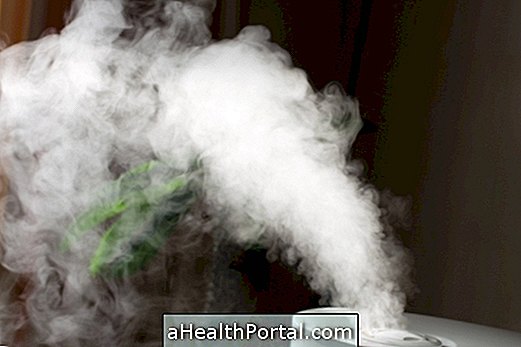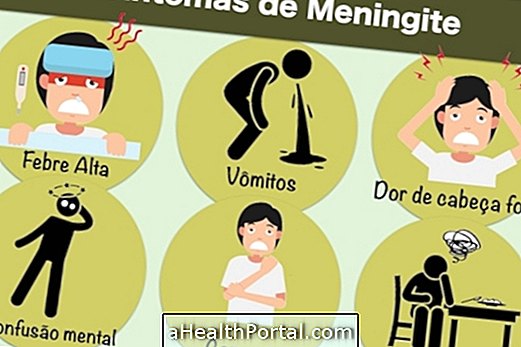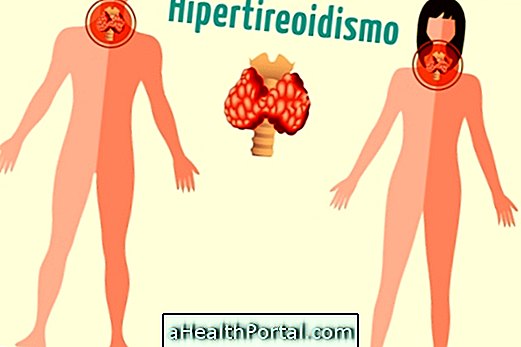Asthma bronchitis is inflammation of the lungs, which are places where air passes, caused by an allergy, and therefore, it is often called allergic bronchitis, or simply Asthma.
Asthmatic bronchitis is a disease that does not "get" because it is not transmissible from one individual to another. However, asthma has genetic factors involved that can be passed down from generation to generation, so the children or grandchildren of asthmatics are more likely to suffer from asthma at any stage of life.
Its causes are related to respiratory allergy but people who have some tendency to have other allergies such as food allergy or skin allergy are more likely to have asthma.
How To Know if It Is Asthmatic Bronchitis

The main symptoms of asthmatic bronchitis can be:
- Difficulty breathing and feeling that the air does not reach the lungs;
- There may be nocturnal cough;
- There may be small amount of phlegm, similar to egg white;
- Audible sounds when the subject breathes, popularly called wheezing;
- In an intense asthma attack the fingertips and mouth may become purplish due to the lack of oxygen in the body.
Symptoms of asthma can arise at any time and at any age and therefore it is important to follow treatment with the use of medicines prescribed by the doctor. The diagnosis of asthmatic bronchitis can be made by the pneumonologist through observation of symptoms, auscultation of the lungs and through the spirometry test and the allergy test.
To find out if your baby has asthma, parents may notice the following symptoms: coughing triggered by laughter or intense crying, breathing faster than usual, and feeling of shortness of breath. In this case the baby should be taken to the pediatrician so that he can observe the signs and can identify if it really is asthma and indicate how the treatment should be done.

Asthmatic bronchitis has a cure?
Asthmatic bronchitis can be cured when the allergy that causes bronchitis can be eliminated and this can be achieved with the use of certain vaccines indicated by the pulmonologist.
However, in many cases, as the allergy can not be cured, asthma has no cure and the individual needs to follow treatment throughout life because asthma is severe and in a time of crisis, it can be fatal because the air does not can reach the lungs.
How is the treatment done?
The treatment for asthmatic bronchitis can be done with the use of drugs that suppress the bronchial tubes and facilitate the passage of air, prescribed by the pulmonologist. Some examples of remedies for asthmatic bronchitis are Ventilam and Symbicort, which are a kind of "bombinha" that the individual must take to everywhere wherever he goes and use whenever he feels short of breath. In addition it is recommended to take anti-inflammatory drugs that must be inhaled daily to prevent asthma attacks.
See the step by step to use the asthma bomb correctly.
Physical therapy can also be a resource for the treatment of asthmatic bronchitis and is useful for improving the person's respiratory capacity and physical fitness. This can be done with breathing exercises that strengthen the muscles involved in breathing, expanding lung capacity and so may be useful outside the asthma crisis.
Here's how eating can help control asthma in the following video:

Asthmatic bronchitis in pregnancy can also be treated in the same way, with the use of medications that women already use to treat asthma. However, about 30% of pregnant women may not present any symptoms of asthma during pregnancy, although others may present asthma symptoms more frequently.
The treatment of asthma in the baby should be done through nebulization with the asthma medicines diluted in saline solution. The pediatrician may indicate that the nebulization is performed daily or whenever the baby exhibits the symptoms of shortness of breath. Learn more details of the treatment here.
Main causes
Asthma is caused by a genetic change that when associated with environmental factors can trigger a chronic inflammation of the airways, which leads to the narrowing of airway channels within the lungs. Thus, asthma is related to a respiratory allergy that can be triggered when the individual is:
- Close to animals with fur like dog or cat;
- In very dusty places;
- In places with mold;
- In very cold places, because this increases pollution;
- Stressed or have very strong emotions.
Asthma is usually diagnosed in childhood, but asthma can be developed at any stage of life, and it is more common in individuals who have some type of respiratory or food allergy.





















